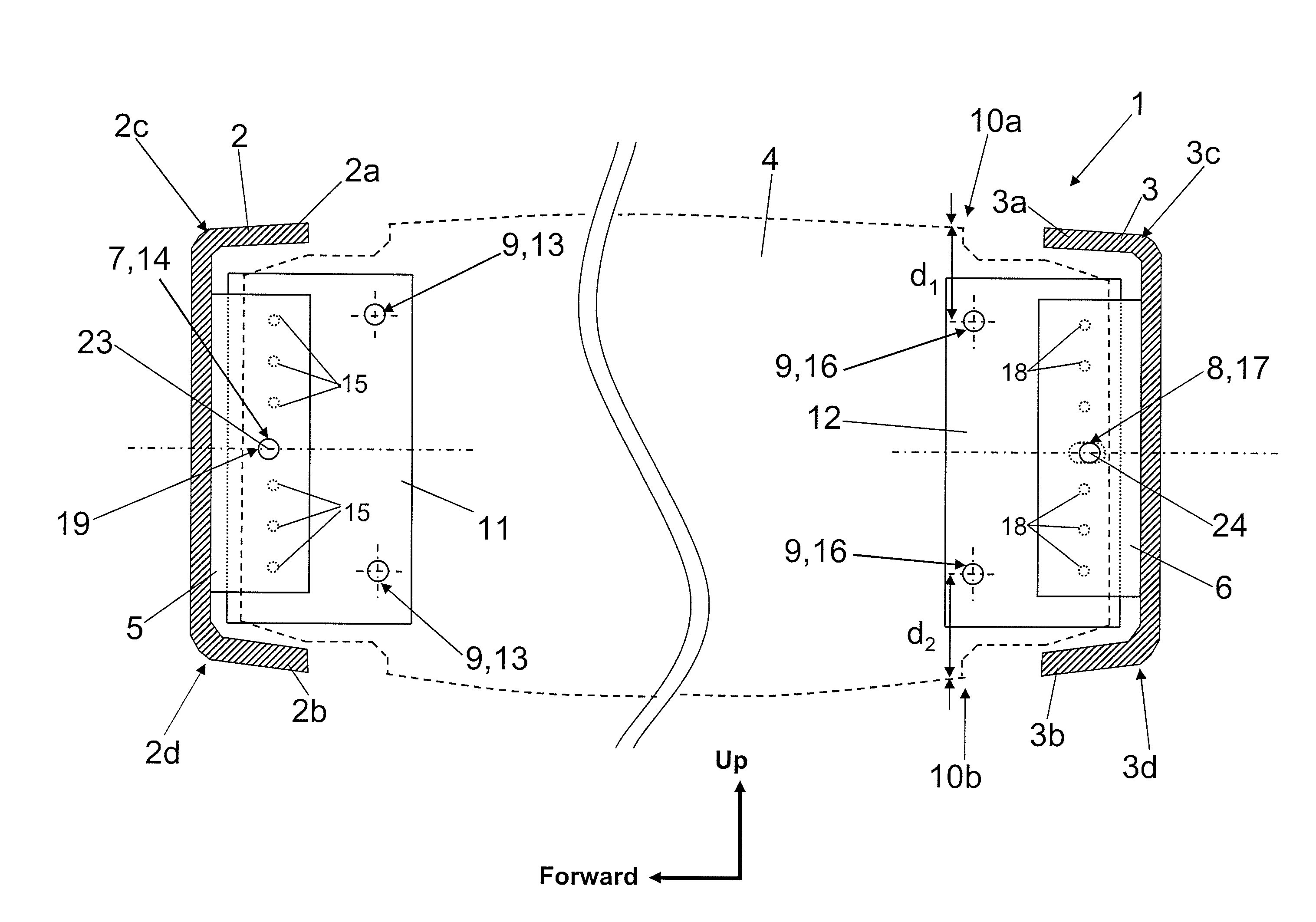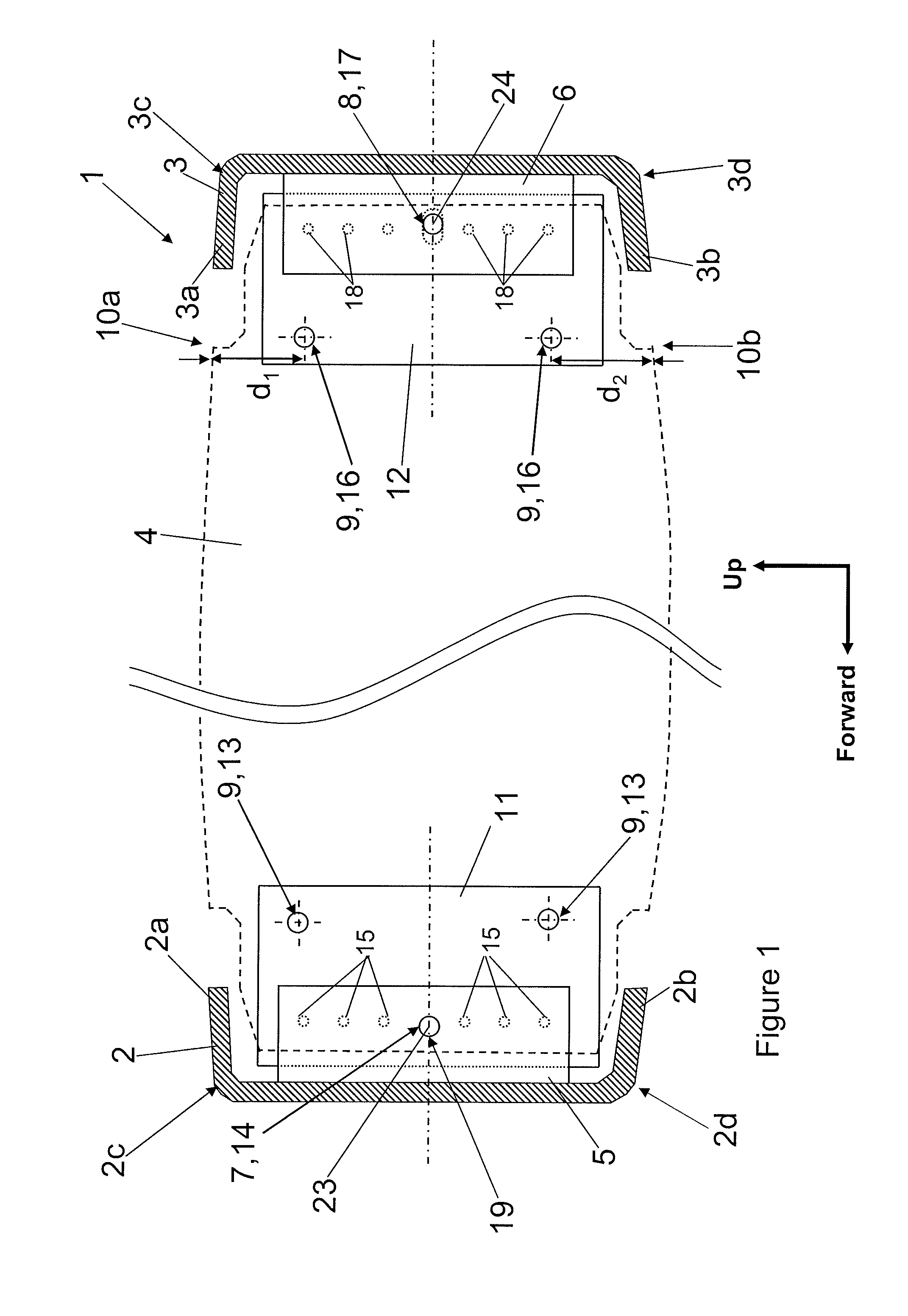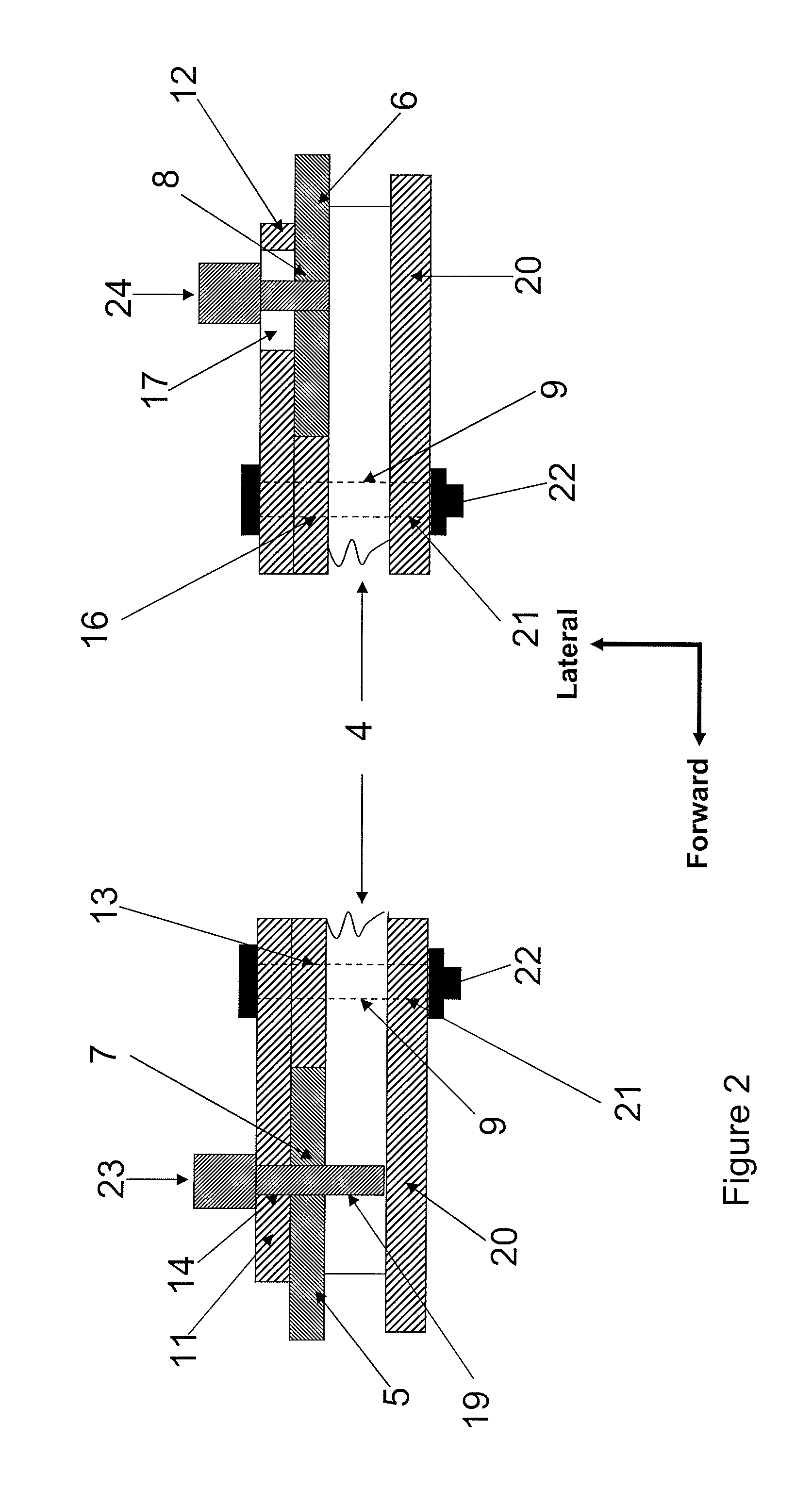Aircraft rib-spar joint
a technology of ribspar joints and ribs, which is applied in the direction of measuring/indicating equipment, wings, transportation and packaging, etc., can solve the problems of large amount of tooling, subject to operator errors, and time-consuming assembly process, and achieve the effect of improving operator safety
- Summary
- Abstract
- Description
- Claims
- Application Information
AI Technical Summary
Benefits of technology
Problems solved by technology
Method used
Image
Examples
Embodiment Construction
)
[0029]FIG. 1 illustrates a vertical section through an aircraft wing box 1 during assembly. The wing box includes a front spar 2 a rear spar 3 a plurality of ribs (the outline of one of the ribs 4 is shown in broken line in FIG. 1) extending between the spars 2, 3, and upper and lower wing covers, or skins (not shown), extending between the spars 2, 3. The front spar 2 has a rib post 5 fixedly attached thereto, and the rear spar 3 has a rib post 6 fixedly attached thereto. The wing box is assembled by attaching each of the plurality of ribs 4 to respective rib posts 5, 6 attached at spaced locations along the front and rear spars 2, 3. Subsequently, upper and lower wing covers (not shown) are attached to spar flanges 2a, 2b, 3a, 3b and to rib feet (not shown) of the ribs 4.
[0030]The attachment of the rib 4 to the rib posts 5, 6 will now be described in detail. The front and rear spars 2, 3 are fixed in predetermined positions relative to one another. This may be done using an appro...
PUM
| Property | Measurement | Unit |
|---|---|---|
| stress concentration | aaaaa | aaaaa |
| gravity | aaaaa | aaaaa |
| time | aaaaa | aaaaa |
Abstract
Description
Claims
Application Information
 Login to View More
Login to View More - R&D
- Intellectual Property
- Life Sciences
- Materials
- Tech Scout
- Unparalleled Data Quality
- Higher Quality Content
- 60% Fewer Hallucinations
Browse by: Latest US Patents, China's latest patents, Technical Efficacy Thesaurus, Application Domain, Technology Topic, Popular Technical Reports.
© 2025 PatSnap. All rights reserved.Legal|Privacy policy|Modern Slavery Act Transparency Statement|Sitemap|About US| Contact US: help@patsnap.com



